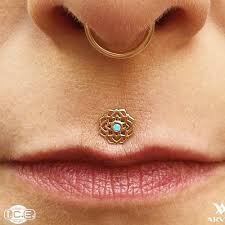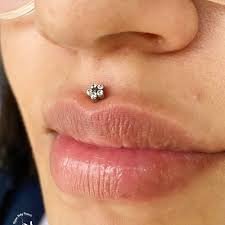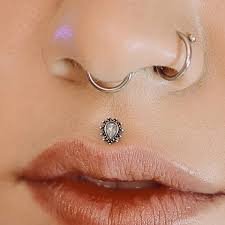The medusa piercing, also known as a philtrum piercing, is a popular facial modification that involves placing a stud through the philtrum—the groove located just above the upper lip and below the nose. This piercing has gained significant popularity due to its aesthetic appeal and the bold statement it makes. It’s a versatile piercing medusa piercing that can complement various facial features and styles.
Table of Contents
Anatomy and Placement of Medusa Piercing
Understanding the anatomy of the philtrum is crucial before considering a medusa piercing. The philtrum is the vertical indentation in the middle of the upper lip, running from the base of the nose to the top of the lip. Piercing this area requires precision to ensure proper placement and to minimize potential complications.
Jewelry Options for Medusa Piercing

When it comes to jewelry for a medusa piercing, several options are available:
- Labret Studs: The most common choice, featuring a flat back and a decorative front.
- Curved Barbells: Suitable for variations like the vertical medusa or Jestrum piercing.
- Ball Closure Rings (BCRs) and Circular Barbells: Less common but chosen for unique aesthetics.
Selecting the right jewelry material is essential. Hypoallergenic metals such as titanium, niobium, and high-quality gold are recommended to reduce the risk of allergic reactions and promote healing.
Pain Level and Healing Process
The pain associated with a medusa piercing varies among individuals but is generally considered moderate. The healing time typically ranges from 6 to 12 weeks, depending on individual health, aftercare practices, and the body’s response to the piercing.
Aftercare Guidelines for Medusa Piercing
Proper aftercare is vital to ensure the success of a medusa piercing. Key aftercare steps include:
- Cleaning the piercing with a saline solution 2–3 times daily.
- Avoiding touching the piercing with unwashed hands.
- Using an alcohol-free mouthwash to maintain oral hygiene.
- Sleeping with the head elevated during the initial healing phase.
- Refraining from oral activities that could introduce bacteria, such as kissing or oral sex, during the healing period.
Adhering to these guidelines helps prevent infections and promotes faster healing.
Risks and Complications
While medusa piercings are generally safe, they carry potential risks, including:
- Infection: If proper aftercare isn’t followed.
- Rejection or Migration: The body may push the jewelry out.
- Gum Recession or Tooth Damage: Due to constant contact with dental structures.
- Keloid Formation: In individuals prone to excessive scarring.
Being aware of these risks and monitoring the piercing site regularly can help in early detection and management of complications.
Medusa Piercing Variations

There are several variations of the medusa piercing to consider:
- Double Medusa Piercing: Involves two piercings placed symmetrically on either side of the philtrum.
- Vertical Medusa Piercing (Jestrum): A variation where the piercing is placed vertically through the philtrum, often using a curved barbell.
Each variation offers a unique aesthetic and may have different healing considerations.
Choosing a Professional Piercer
Selecting a qualified and experienced piercer is crucial when getting a medusa piercing. Ensure the piercer uses sterile equipment, follows proper hygiene protocols, and provides clear aftercare instructions. It’s advisable to review their portfolio and seek recommendations to ensure a safe and successful piercing experience.
Also read Lip Flip Before and After A Comprehensive Guide to Subtle Lip Enhancement
Conclusion
The medusa piercing is a striking facial modification that can enhance one’s appearance and express individuality. By understanding the anatomy, jewelry options, aftercare requirements, and potential risks, individuals can make informed decisions and enjoy a safe and aesthetically pleasing piercing experience. Always consult with a professional piercer to ensure the best outcomes for your piercing journey.


